Recently, the technological achievements of “Key Technologies, System and Application of Integrated Multi-Energy Flow Management” completed by the team of Professor Sun Hongbin from the Department of Electrical Engineering and Applied Electronics of Tsinghua University passed the appraisal organized by the China Electrotechnical Society. More than 30 people including Zeng Rong, Vice President of Tsinghua University, main leaders of China Electrotechnical Society, experts of the appraisal committee, and main members of Professor Sun Hongbin’s team participated in the meeting in an “online and offline” form.
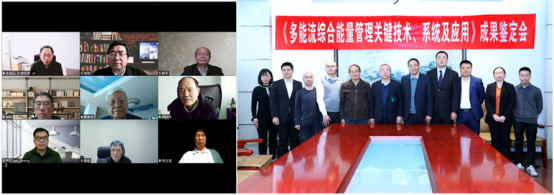
Online and offline participants
The meeting was chaired by Han Yi, Secretary General of China Electrotechnical Society. The appraisal committee consists of Academician Zhou Xiaoxin of China Electric Power Research Institute, Academician Li Licheng of China Southern Power Grid Corporation, Academician Cheng Shijie of Huazhong University of Science and Technology, Academician Luo An of Hunan University, Academician Wang Chengshan of Tianjin University, Academician Gao Xiang of Zhejiang University, Professor Mu Gang, former president of Northeast Electric Power University, Professor Ju Ping, former vice president of Hohai University, and Professor Yan Zheng from Shanghai Jiaotong University.
Zeng Rong, Vice President of Tsinghua University, attended the appraisal meeting and delivered a speech. He pointed out that the integrated energy system is an important technical path to support the realization of China’s dual-carbon goal. During this transformation, the team led by Professor Sun Hongbin has the courage to break through the comfort zone and actively explore the new research field of multi-energy flow energy management, they have realized the leap of energy management from power system to multi-energy flow system, which is of great significance to the realization of China’s energy revolution and dual-carbon goal.
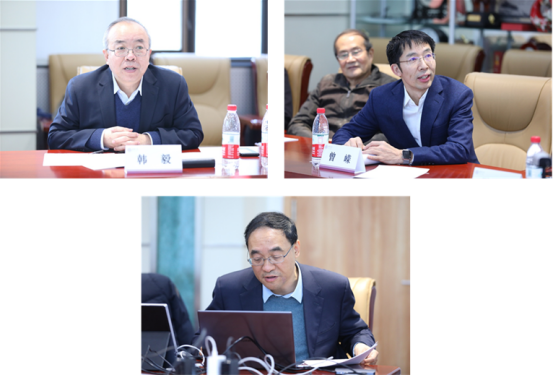
Han Yi, Secretary-General of China Electrotechnical Society, Zeng Rong, Vice President of Tsinghua University, and Sun Hongbin, the first person to complete the project, hosted or delivered speeches at the meeting
Professor Sun Hongbin, Professor Guo Qinglai, Associate Researcher Wang Bin and other project team members from the Department of Electrical Engineering and Applied Electronics made work reports, technical reports, application demonstrations, etc., and comprehensively reported the project to the appraisal committee. After questioning and discussion, the experts of the appraisal committee agreed that the project, which has achieved significant original scientific research results, opened up a new direction of multi-energy flow energy management, and led the development and progress of integrated multi-energy flow management technology, is original and leading in the world.
The integrated utilization of various energy forms such as electricity, heat, cold and gas is the only way to support China’s energy revolution strategy and dual-carbon goal. The integrated energy system has developed rapidly in the recent decade, but there is a common problem of “sufficiently integrated but insufficiently intelligent” due to lack of synergy. In order to support the transformation of the power energy system, it is urgent to transform the objects of energy synergic control in the energy management system from pure electricity to an integrated energy system of electricity, heating, cold and gas, and develop an integrated energy management system (IEMS). The integrated energy management of multi-energy flow mainly faces two major challenges, the first is that the modeling and analysis of a heterogeneous energy network integrated with electricity, heat, cold, and gas are based on different disciplinary foundations, and there is difficulty in disciplinary integration, the second is that traditional solution theories cannot meet the demand of an large-scale integrated urban energy system for on-line real-time and reliable computation.
After 10 years of research and development, Professor Sun Hongbin and his project team of Tsinghua University, solved the above-mentioned major problems, opened up a new direction for multi-energy flow energy management, and created the theory and technical system for multi-energy flow energy management based on the unified energy path theory, and developed the first large-scale multi-energy flow integrated energy management system (IEMS) at home and abroad, which has been successively put into application in many cities, parks and building with many close partners including State Grid Jilin Electric Power, China Power International, Guangzhou Power Supply Bureau, State Grid Integrated Energy Service Company, and Zhejiang Energy Group. It has expanded the energy management object from “pure current” to “multi-energy flow”, realized the online application of integrated energy management from “small-scale” systems to a “large-scale” system, and created significant economic and social benefits in improving the integrated energy utilization efficiency, maximizing the consumption of renewable energy, and ensuring the security of the integrated energy system.
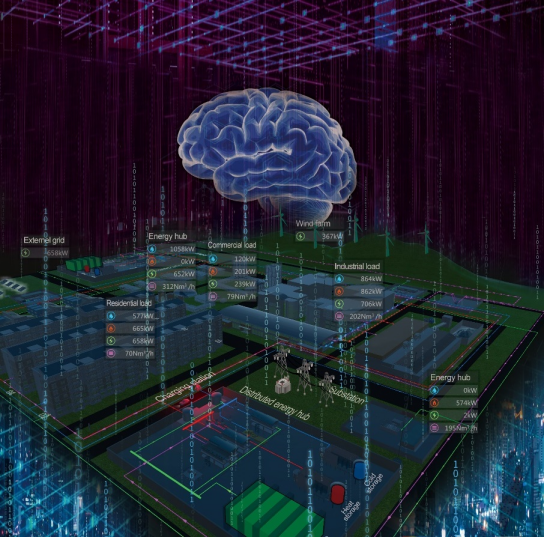
IEMS is the brain of the integrated energy system, directing the flow of information and regulating the flow of energy.
The multi-energy flow integrated energy management system (IEMS) developed by the project is a new generation of energy management system for integrated energy systems such as electricity, heat, cold, and gas, applicable to families/buildings, residential zones/parks, towns/cities, provinces/regions, and even states/world. As the “brain” of the integrated energy system, it directs the flow of information, regulates the flow of energy, realizes system-wide coordination, and ensures the green, low-carbon, safe and efficient operation of integrated energy systems in different scales, and is a major milestone technological breakthrough supporting the national “dual carbon” strategy.
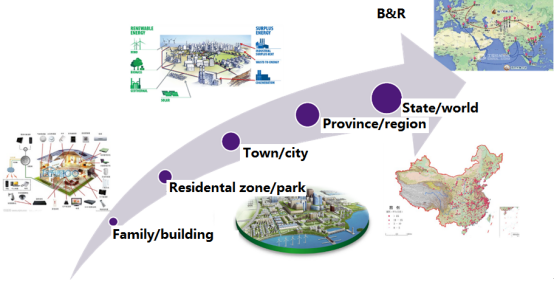
IEMS application scenarios for project development
Innovation achievement 1: It created a unified energy path theory for integrated energy system analysis, physically realized the evolution of the analysis method from field to path aiming at the coupling analysis problem of power grid - thermal grid and fuel gas grid, mathematically realized the algebraicization of complex partial differential equations, and solved the problem that the heterogeneous energy flow models of the coupling of electricity, gas, heat and cold are highly varying and any large-scale system cannot be solved efficiently and reliably. The analysis speed of typical large-scale systems can be increased by 2 orders of magnitude, making the online analysis of large-scale multi-energy flow networks becomes possible.

Innovation Achievement 2: It introduced a dynamic state estimation method of multi-energy flow based on a unified energy path, by which the internal state and dynamic process of heat network and gas network can be reliably estimated based on multi-section measurement data within a time window, and the quantitative assessment on the spatiotemporal distribution of energy storage state flexibility in the heat pipeline can be realized.Unified energy path theory for integrated energy system analysis
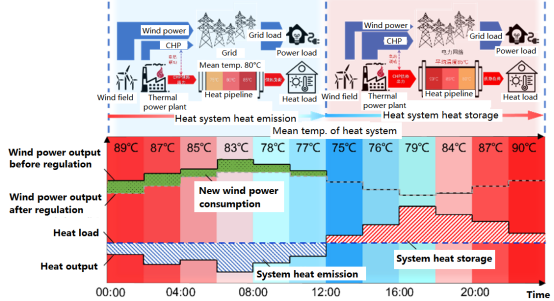
By quantitatively evaluating the heat storage state in the heat supply network, its thermal inertia can be used to provide flexible resources for the power grid, thereby improving the new energy consumption capacity.
Innovation Achievement 3: It proposed a multi-energy flow and multi-time scale safety assessment method based on a unified energy path, solved the real-time and reliability problems of online safety assessment of multi-energy flow systems based on quasi-steady-state fast fault screening, realized high-efficiency early warning with the variance of different energy flow transmission, and reduced the risk of power outage spreading across the energy chain.
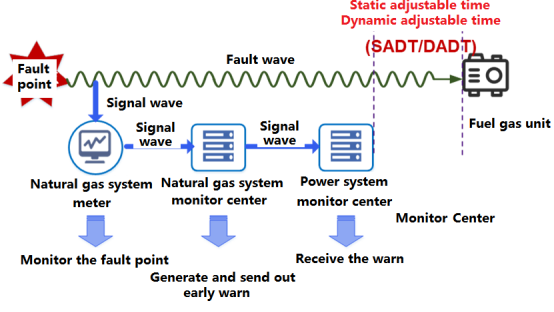
The risk of power outage accident spreading from the gas network to the power grid is cut off depending upon the variance between the transmission speed of air pressure change and the transmission speed of electric power signal after the natural gas network failure.
Innovation Achievement 4: It introduced a dynamic optimization scheduling method of multi-energy flow based on a unified energy path, overcame the problem in efficient solution of mixed integer optimization of multi-energy flow system with constraints of high-dimensional partial differential algebraic equations, excavated multi-energy flow and multi-time scale flexibility, and maximized the energy utilization efficiency and new energy consumption.
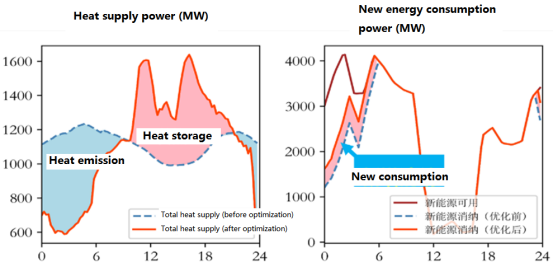
Wind power consumption is significantly increased using the heat emission and heat storage effect in the heat supply network.
Based on the above key technological breakthroughs, the project team has developed a multi-energy flow integrated energy management system (IEMS), which has been actualized in many places, covering typical application scenarios such as multi-energy buildings, multi-energy parks and smart cities with a variety of typical multi-energy elements such as cold, heat, electricity and gas, etc, supporting the green, low carbon, safe and efficient operation of the integrated energy system.
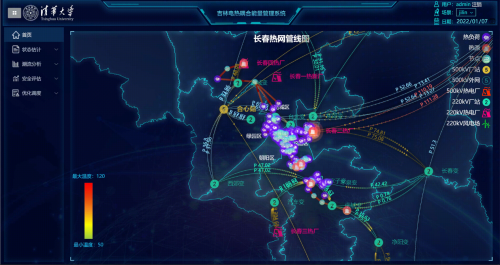
Multi-energy flow integrated energy management system (IEMS)

















 News & Events
News & Events